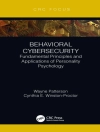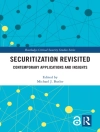Concurrency in Dependable Computing focuses on concurrency related issues in the area of dependable computing. Failures of system components, be hardware units or software modules, can be viewed as undesirable events occurring concurrently with a set of normal system events. Achieving dependability therefore is closely related to, and also benefits from, concurrency theory and formalisms. This beneficial relationship appears to manifest into three strands of work. Application level structuring of concurrent activities. Concepts such as atomic actions, conversations, exception handling, view synchrony, etc., are useful in structuring concurrent activities so as to facilitate attempts at coping with the effects of component failures. Replication induced concurrency management. Replication is a widely used technique for achieving reliability. Replica management essentially involves ensuring that replicas perceive concurrent events identically. Application of concurrency formalisms for dependability assurance. Fault-tolerant algorithms are harder to verify than their fault-free counterparts due to the fact that the impact of component faults at each state need to be considered in addition to valid state transitions. CSP, Petri nets, CCS are useful tools to specify and verify fault-tolerant designs and protocols. Concurrency in Dependable Computing explores many significant issues in all three strands. To this end, it is composed as a collection of papers written by authors well-known in their respective areas of research. To ensure quality, the papers are reviewed by a panel of at least three experts in the relevant area.
Paul Ezhilchelvan & Alexander Romanovsky
Concurrency in Dependable Computing [PDF ebook]
Concurrency in Dependable Computing [PDF ebook]
Dieses Ebook kaufen – und ein weitere GRATIS erhalten!
Sprache Englisch ● Format PDF ● ISBN 9781475735734 ● Herausgeber Paul Ezhilchelvan & Alexander Romanovsky ● Verlag Springer US ● Erscheinungsjahr 2013 ● herunterladbar 3 mal ● Währung EUR ● ID 4605078 ● Kopierschutz Adobe DRM
erfordert DRM-fähige Lesetechnologie












